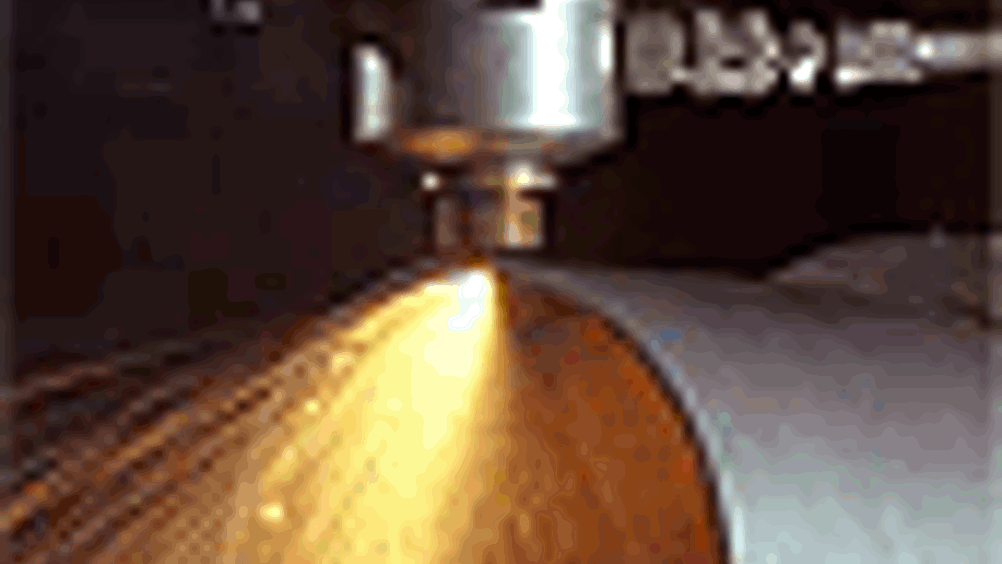Lasers to join nuclear clean-up

Future nuclear decommissioning projects may rely on high-power lasers currently used to weld automotive bodies.
That is the hope of welding experts at TWI, who have been awarded a contract worth almost £1m by the Nuclear Decommissioning Authority to further develop the idea.
TWI believes high-power lasers could remove contaminated surfaces of concrete and cut up metal pipework and process vessels inside nuclear reactors, or other contaminated environments.
Such work is currently done by water jetting or mechanical cutters manipulated by a remotely controlled device similar to a small mechanical digger.
The TWI technique would deliver the laser energy from a high-power solid-state laser, through an optical fibre, to a process head. These solid-state lasers are currently used for welding car body parts on automotive production lines.
Paul Hilton, project manager at TWI, said: 'For the automotive industry this kind of laser technology has to be operational 24 hours a day and it has to be very reliable. Of course, that reliability is a requirement for any decommissioning application as well.'
Hilton said delivering laser energy through optical fibres allows the laser power source to be positioned away from the target. He added that by using this technology the process end effectors are lighter and easier to manipulate than mechanical cutters, which impose high reaction forces, so small, lightweight robots can control them.
Hilton said this gives decommissioning teams the ability to access smaller, more remote areas in a reactor.
A section of concrete would be decontaminated by passing the laser beam in a defocused condition over its surface. This causes the surface to break up and fragments of concrete up to a few square centimetres in area spall away from the surface.
Hilton said research groups have successfully demonstrated this 'scabbling' technique in laboratory conditions over the last decade, but no one has developed a way to clean up the debris without manual intervention. He added: 'Usually someone is sent in to sweep it up. One of the steps forward with our method is it will have a built-in debris collection system.'
Hilton said the TWI laser decontamination technique will also include an automatic system for sensing the location of the reactor wall.
'The robot will have to be mechanically driven to the wall,' he added, 'but then sensors will take over and maintain the device's head at a constant distance from the wall.'
Apart from decontaminating concrete, the lasers will also be used for cutting reactor pipes, which are currently cut with either reciprocating saws or diamond machines.
Hilton said developing a laser-cutting method for this application is a more challenging process than most people think.
'In this application we are looking to move towards the public's perception of the James Bond kind of laser,' he added. 'It will be using the laser more like a knife slicing through the tube.'
Hilton said it is a challenging optical problem to get the depth of focus in the laser beam required for cutting tubes from one side in a single pass. He added that TWI has not yet determined the full capability in terms of diameter of pipe and wall thickness achievable using this cutting technique, but the team hopes to quantify this soon.
The group has completed the design of its laser scabbling and cutting device, and procured the necessary 5kW fibre laser. It is currently finishing the final integration of the device's components and hopes to have a working prototype in the first quarter of 2010.
Siobhan Wagner
Register now to continue reading
Thanks for visiting The Engineer. You’ve now reached your monthly limit of news stories. Register for free to unlock unlimited access to all of our news coverage, as well as premium content including opinion, in-depth features and special reports.
Benefits of registering
-
In-depth insights and coverage of key emerging trends
-
Unrestricted access to special reports throughout the year
-
Daily technology news delivered straight to your inbox










Fusion inches closer as ITER completes magnet system
I believe the purpose of ITER isn't to make usable power, it is a research project which will be used to design the first generation of actual...